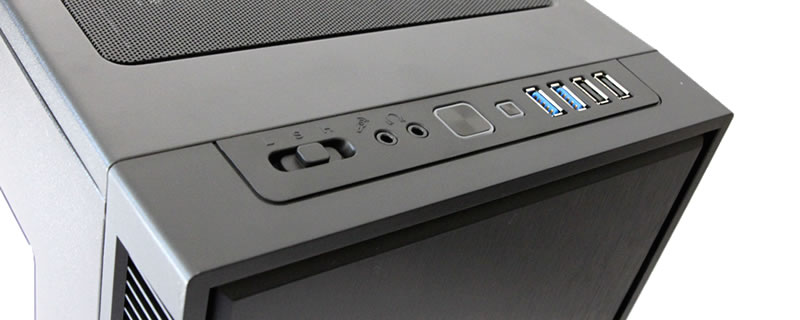Anidees AI5S Case Review
Conclusion
If you’ve read the introduction you’ll already know that simply by seeing the size, and feeling the weight of the box this case came in , we were convinced that inside we were going to find a low quality, low feature count M-ATX case. Â Now given that the case itself only measures 470x220x430mm (HxWxD), and weights a mere 5.96kg we think you’ll forgive us our misapprehension, but god, how wrong could we have been! Â Despite it’s petite dimensions, the AI5S still manages to house a full size ATX board, as well as the usual smaller sizes. Â There’s no storage up front, with that area being left clear for cooling, but there are a pair of 2.5″ show of mounts atop the near as damn it full length false floor/PSU cover. Â We say near as damn it because there’s a small 25mm deep gap at the front, which can be used if you want to slip and extra 120mm fan in the front to accompany the two that are already there. Â Round the back it’s all happening, with stealth mounts for an additional four 2.5″ drives as well as a rack catering for three 3.5″ or 2.5″ drives. Â PSU space is a bit tight, but the HDD cage can always be removed to provide roomier accommodation. Â When it comes to GPUs, the case will take anything up to 340mm long, and will house traditional tower air coolers up to 175mm tall.
So far, so good, and what we can’t believe is that it just keeps getting better. Â Thanks to the absence of drive cages at the front of the case you can get a 240mm or 280mm rad in there, and with a usable space of some 100mm there’s not reason why you can’t go thick with a push pull set up. Â Now, if the water cooling credentials ended there we’d be pretty happy, but they don’t. Â As a result of a generous off set in the roof mounts, the AI5S will actually take a 240mm rad in push pull up in the roof. Â For demonstration purposes we combined our 40mm think Rad with two sets of fans, giving a total thickness of 90mm and it fitted just fine. Â OK, you are going to have to watch the height of components on your motherboard, and perhaps get a bit clever with the building of the loop, but if you stick to standard height RAM, you’ll still have another 10mm of clearance to play with, so it’s not like like the components are going to be hard up against each other.Â
So what of the competition?  Well there are plenty of cases around the £70-80 mark, but very few that offer anything like what the AI5S is able to.  The only other case we’ve looked at recently that gets anywhere close for the price is the SiverStone Kublai KL07.  The KL07 can take a 360 in the front, and a 240 in the roof, but despite its much larger size, the roof space on offer is a lot more limited than the Anidees case, this for the greater part is down to the designers at Anidees having the forethought to give the AI5S larger roof off sets.  Although not chalk and cheese exactly, the two cases do fill slightly different niches of the market.  The KL07 has its sound proofing, and the AI5S has it’s window, something the KL07 is sadly lacking.  Let’s end the review by putting it this way, when the we looked at the KL07 we thought it would be a while before anything we saw was able to give it a run for its money, but it just goes to show, things don’t stand still for long in the PC case market, and the AI5S represents some serious competition.Â
You can discuss the Anidees AI5S Case Review on the OC3D Forums.



